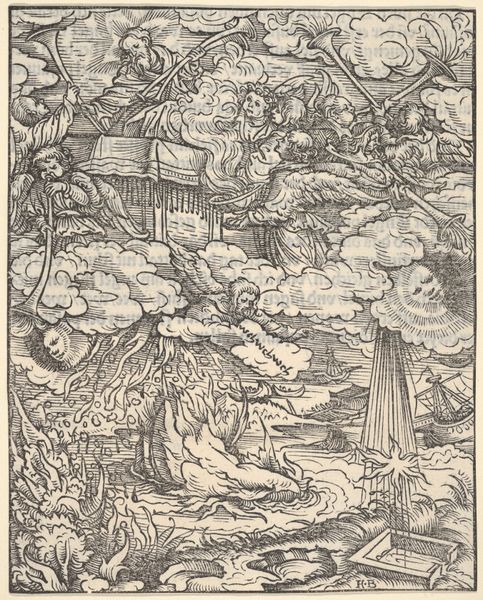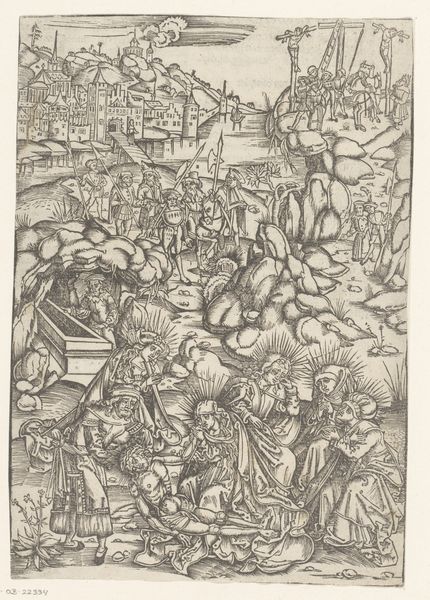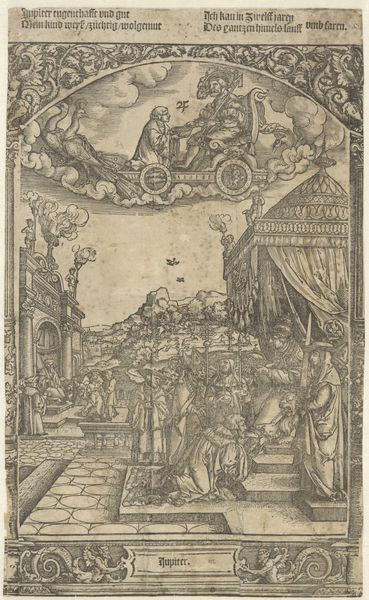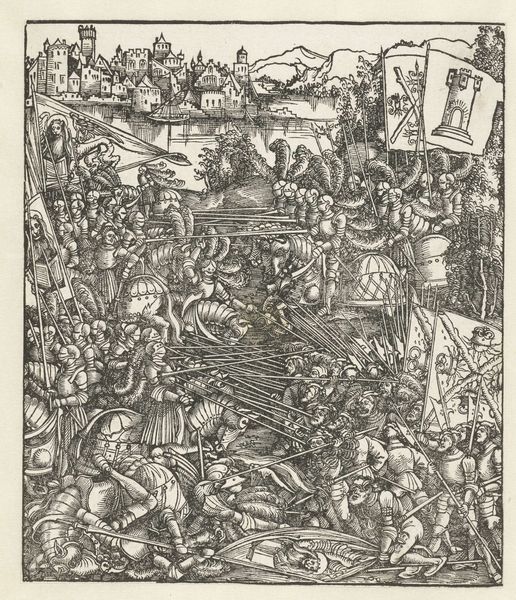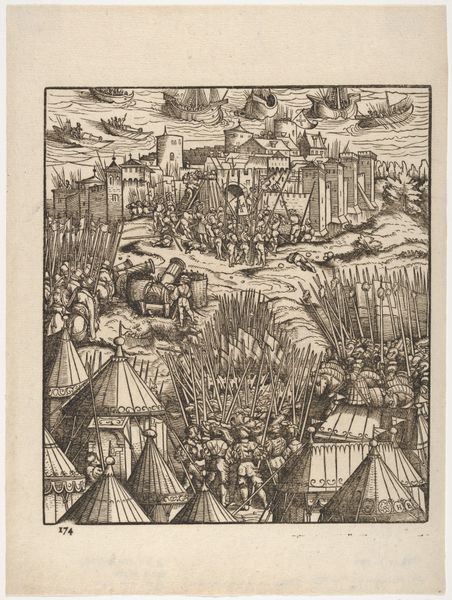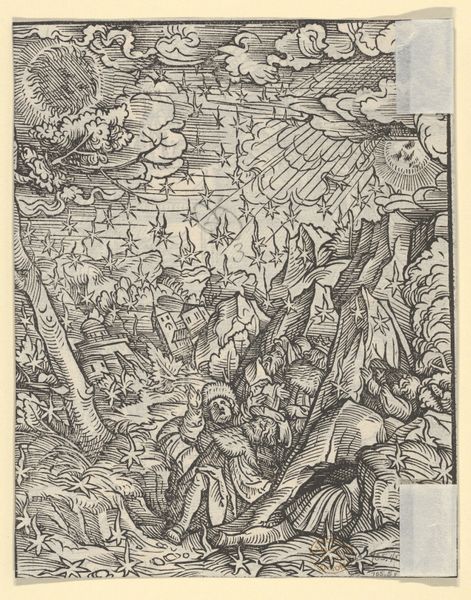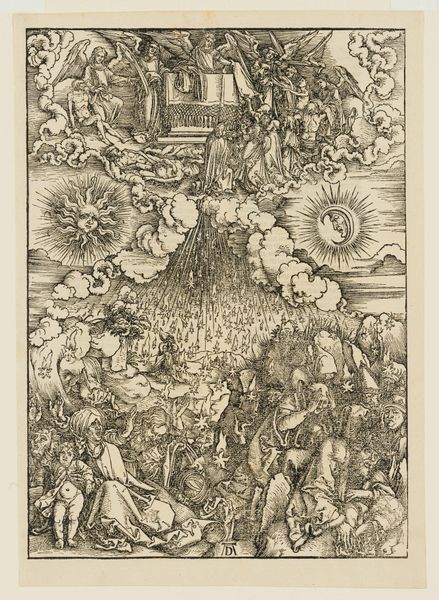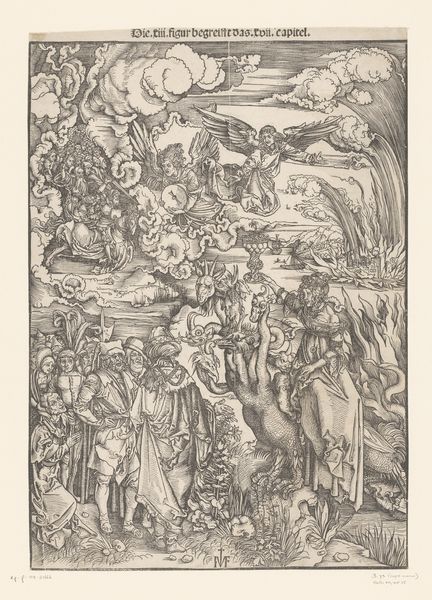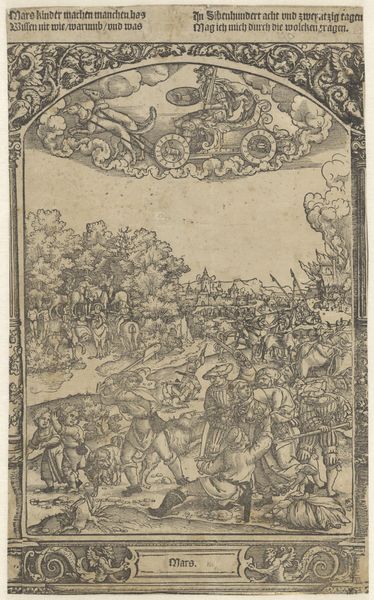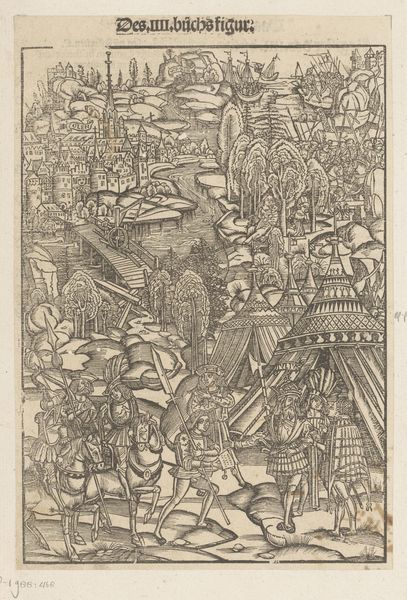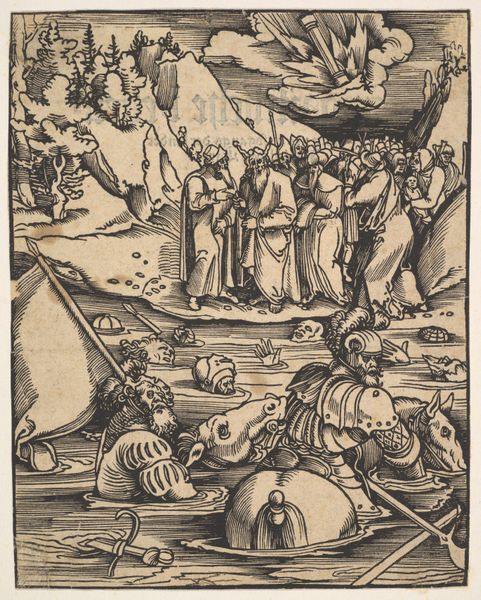
print, intaglio, woodcut, engraving
medieval
pen sketch
intaglio
old engraving style
woodcut
history-painting
northern-renaissance
engraving
Dimensions: height 228 mm, width 160 mm
Copyright: Rijks Museum: Open Domain
Curator: This engraving from 1508 plunges us into the thick of a battle: “Veldslag van Julius Caesar tegen Galliërs," or, "Julius Caesar's Battle against the Gauls.” What strikes you immediately about this intense scene? Editor: Utter chaos. Look at the composition, figures layered upon figures with almost no negative space, forcing the viewer to witness every element of this chaotic clash. Curator: Precisely! Consider the sociopolitical function of such a print. In early 16th century Europe, images of military victories often served as propaganda, reinforcing rulers’ authority and inspiring patriotism. It’s as much a statement of power as it is a depiction of war. Editor: I see what you mean. But look closer: the textures are quite distinct; from the rough-hewn wood of the palisades to the meticulous rendering of the soldiers’ armor. Each contributes to the overall sense of gritty realism, despite its obvious stylization. Curator: Northern Renaissance prints such as this one played a crucial role in disseminating information. Prior to photography, engravings and woodcuts allowed for the widespread circulation of historical events and heroic narratives. Editor: The cross-hatching creates impressive depth. See how it pulls the eye, not just across the battlefield, but into the background where even ships and a distant town add another dimension to the setting? Curator: And not just depth but meaning. "Britannia" is in the far background with a deluge coming from the sky, as an imposing reminder of divine intervention or judgment. It also connects with that early-modern preoccupation with classical antiquity. Caesar wasn’t merely a historical figure, but a symbol of order, law, and civilization, an important ideal at that time. Editor: The print may emphasize the narrative, but ultimately the artistic choices drive its force. I am captured by the graphic tension—how darkness is distributed to generate spatial and dramatic effect. Curator: True, this isn't about pure realism, and the appeal is beyond just reportage. Its impact came from a fusion of propaganda, storytelling, and artistic craft, ensuring both a ruler's status and influence to the people who see it. Editor: Well put. I find this collision of form and message, quite simply, compelling.
Comments
No comments
Be the first to comment and join the conversation on the ultimate creative platform.
